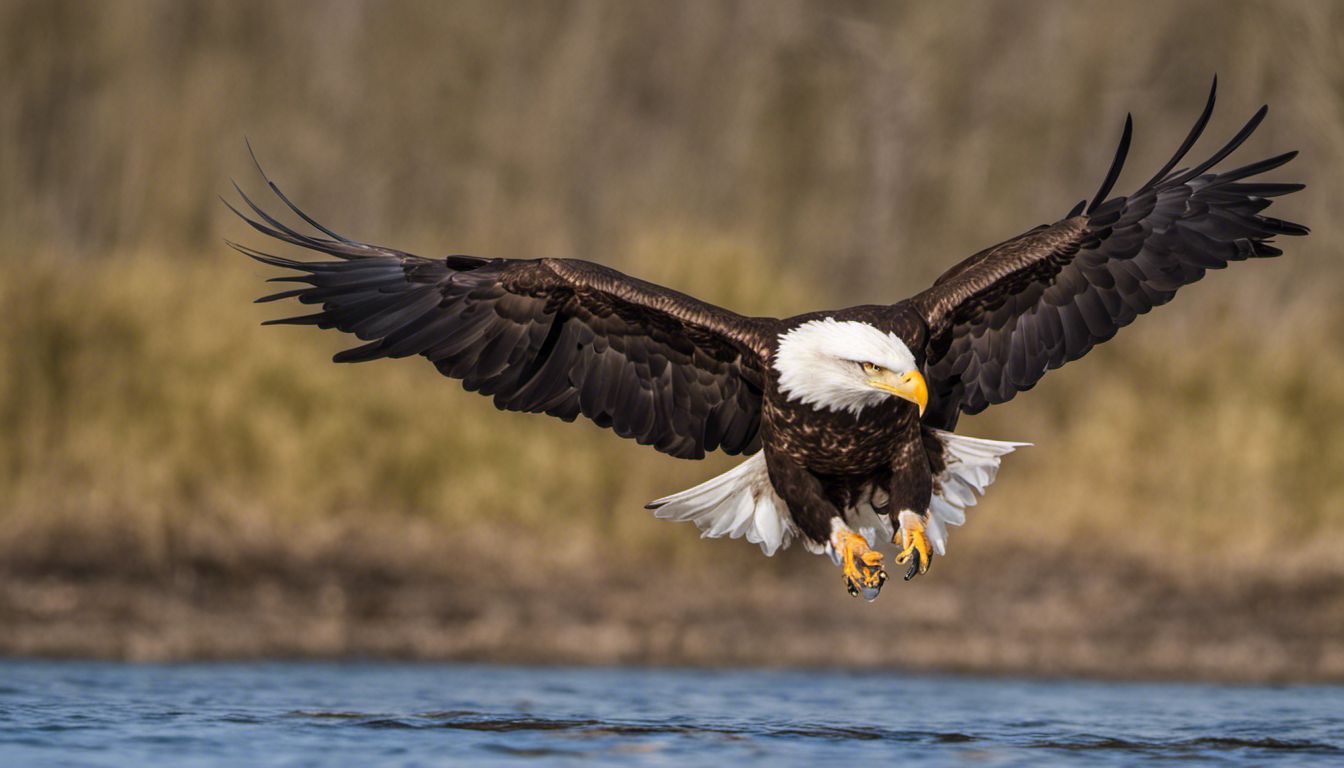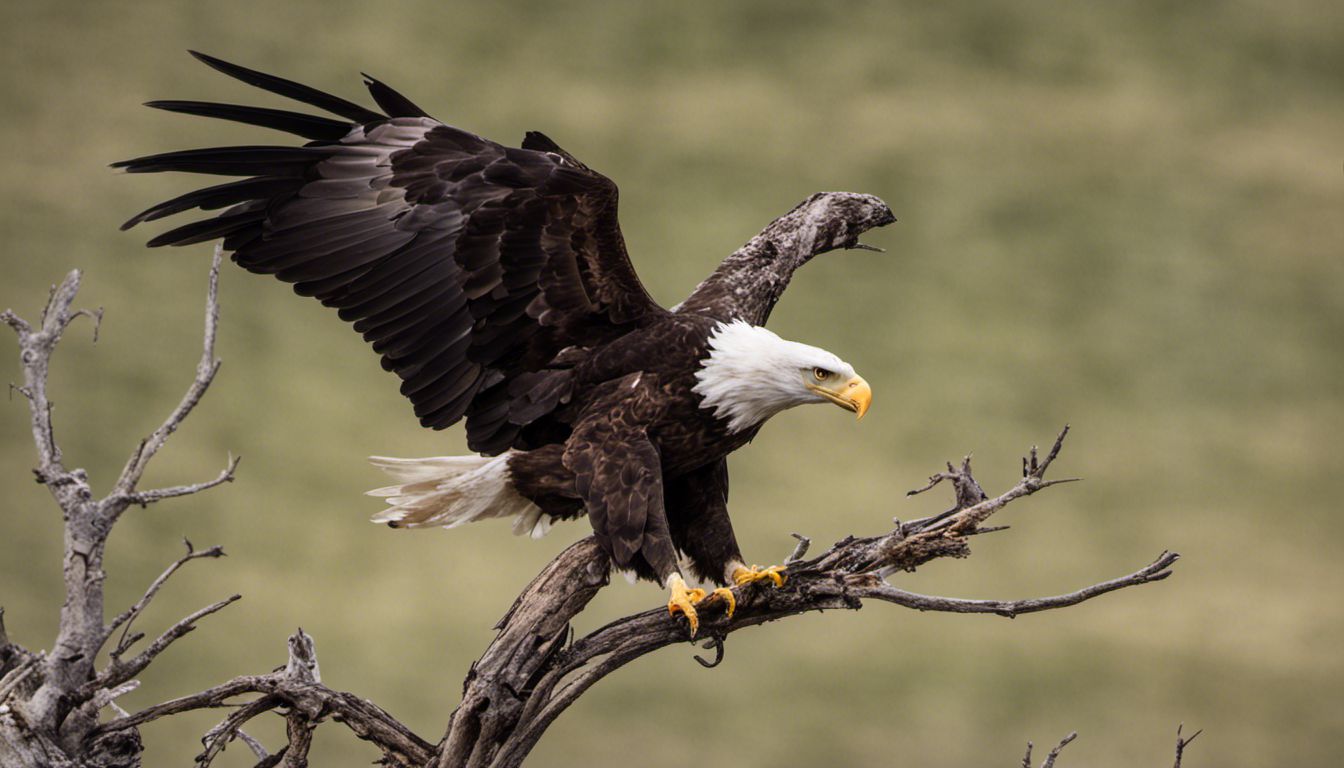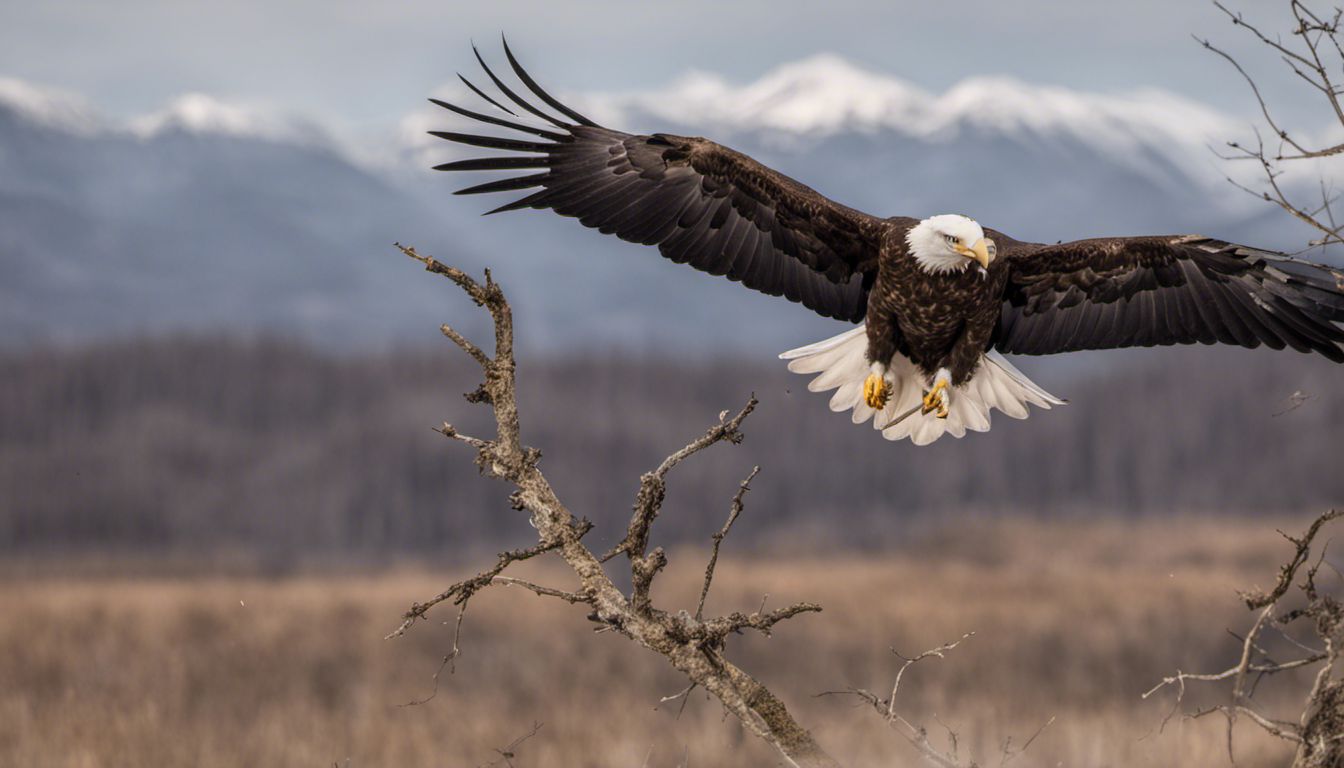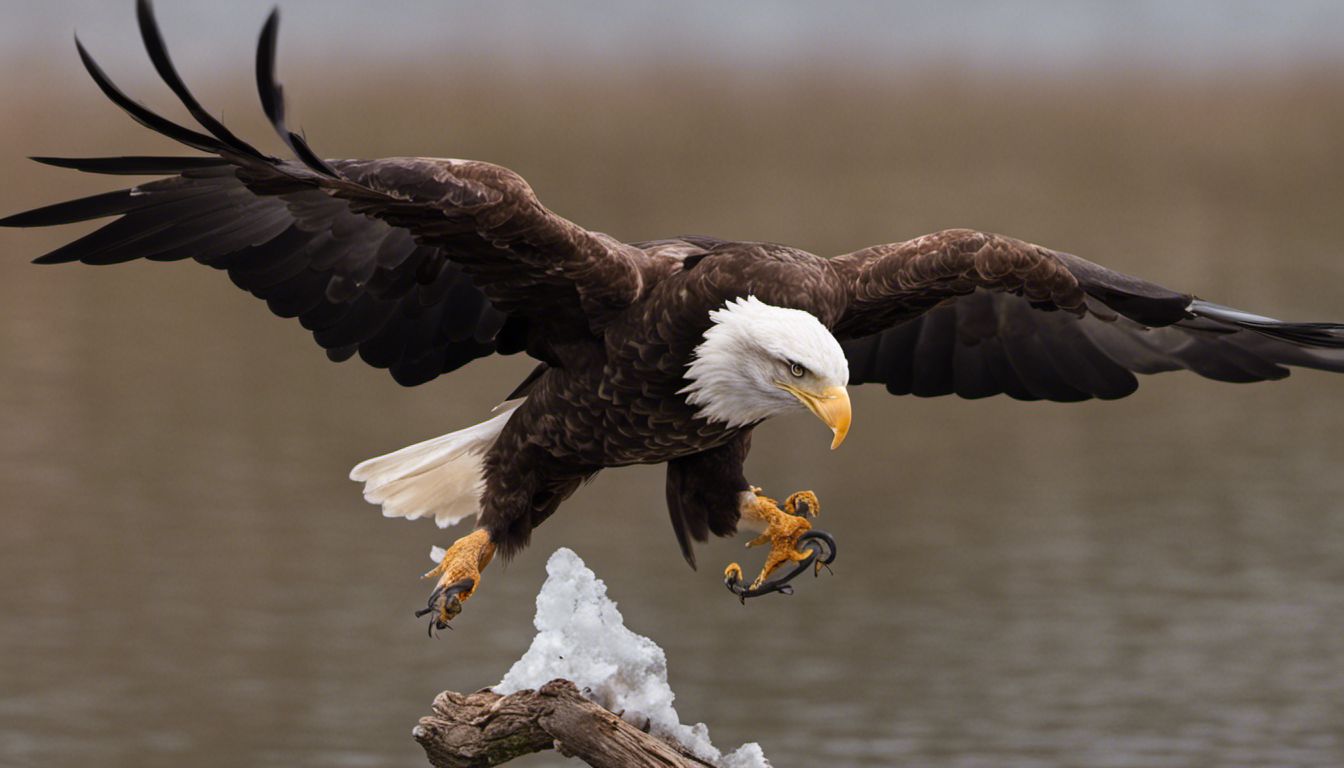The bald eagle emits a series of high-pitched whistling or piping notes, which surprises many people due to its fierce image. This unique cry has often been misunderstood, leading to misconceptions and commonly misattributed sounds.
- The bald eagle’s call is a unique high-pitched whistle or pipe. It’s far from the fierce roar many expect from such a powerful bird.
- There are numerous misconceptions around the bald eagle’s sound. Often, the cries of other birds have been wrongly attributed to it in popular culture, adding to the confusion.
- The frequency and intensity of bald eagle vocalizations are influenced by various factors such as age, sex, location, and their breeding and feeding cycles.
1. The Unique Sound of a Bald Eagle

The bald eagle might be a symbol of power and strength, but it fascinates many by emitting softer sounds than you’d typically expect from such a robust bird. Their signature cries are characterized by high-pitched whistling or piping notes which are quite distinctive from the typical ‘eagle scream’ often portrayed in movies or TV shows.
One of the unique calls of bald eagles is the female’s copulation call. Made during the intimate act, this particular sound offers a great example of the varied vocalization abilities that these magnificent creatures possess.
- The bald eagle doesn’t squawk or roar, but emits a high-pitched whistle or pipe, which are distinctively soft for such a strong bird.
- The female bald eagle’s copulation call is another interesting vocalization that showcases the vast range of sounds in their repertoire.
2. Common Misconceptions About Bald Eagle Calls

When it comes to misconceptions, the bald eagle’s call has not been spared. The reality of their vocalizations stands in stark contrast to what we typically perceive. Many of us strongly associate eagles with a strong, screeching sound, often depicted in Hollywood films, and uncomfortable to the human ear.
However, in reality, the bald eagle’s true call is less dramatic. It’s a melodious sequence of high-pitched notes that are melodious and pleasing, debunking the popular mythic ‘eagle screech.’
- The commonly held belief is that eagles emit screeching or screaming calls, a misconception largely perpetuated by media representations.
- The reality is far mellower, with bald eagles creating a sequence of high-pitched whistling or piping notes that are far from screeching.
3. Factors Influencing Bald Eagle Vocalizations

The sounds that a bald eagle makes are often influenced by a variety of environmental factors. For instance, changes in weather conditions can significantly alter their vocalizations. Similarly, their vocal behavior may also display signs of distress under certain circumstances.
In instances of distress, such as feeling threatened or anxious, the bald eagle’s calls may become rapid and significantly high-pitched, giving alarm signals to others. Weather conditions can also change the frequency of their calls — cold weather may quieten them down, while warmer days could evoke more vocalization.
- Weather changes can greatly influence a bald eagle’s call frequency. For example, warmer days may induce more vocalizations, while colder days may result in quieter eagles.
- In cases of perceived danger or anxiety, bald eagles emit distress calls which are rapid and high-pitched to warn others of potential threats.

